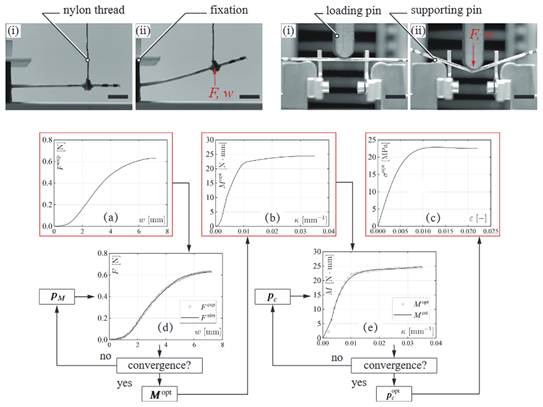Higher wave heights and currents can greatly increase erosion rates. If the coastal region is exposed to long-term erosion without protective measures, the coastline will irreversibly retreat landwards and endanger coastal assets. One of the solutions is to make use of the natural coastal vegetation, which can both stabilise the soil and contribute to wave attenuation. One of the most important plants for ecosystem services is the Elymus due to its ability to stabilise upper salt marshes and prevent erosion. In order to better predict the fluid-plant interaction and wave attenuation by vegetation, an experimental characterization has been carried out on Elymus species in this study to determine the bending flexibility and material stiffness of the plants. For this purpose, three-point and two-point bending tests were performed on different sections of Elymus collected in March, Jun and September to investigate the seasonal changes in the tissue-related mechanical behaviour. Based on the structural properties obtained from histological studies of the cross-sections, the non-linear material behaviour of Elymus was unravelled from the experimentally measured bending behaviour using the inverse finite element method. The results of these experiments revealed some surprising differences in the flexibility of the stems at different seasons. Furthermore, by comparing the data from the tissue samples and the simulations, valuable insight is gained into how the morphology and mechanical behaviour of plants change throughout the year. The experimental and numerical results obtained will help to predict how plants interact with the fluid and how wave attenuation relates to different vegetation conditions, for example, plant density, stiffness and dimensions.Higher wave heights and currents can greatly increase erosion rates. If the coastal region is exposed to long-term erosion without protective measures, the coastline will irreversibly retreat landwards and endanger coastal assets. One of the solutions is to make use of the natural coastal vegetation, which can both stabilise the soil and contribute to wave attenuation. One of the most important plants for ecosystem services is the Elymus due to its ability to stabilise upper salt marshes and prevent erosion. In order to better predict the fluid-plant interaction and wave attenuation by vegetation, an experimental characterization has been carried out on Elymus species in this study to determine the bending flexibility and material stiffness of the plants. For this purpose, three-point and two-point bending tests were performed on different sections of Elymus collected in March, Jun and September to investigate the seasonal changes in the tissue-related mechanical behaviour. Based on the structural properties obtained from histological studies of the cross-sections, the non-linear material behaviour of Elymus was unravelled from the experimentally measured bending behaviour using the inverse finite element method. The results of these experiments revealed some surprising differences in the flexibility of the stems at different seasons. Furthermore, by comparing the data from the tissue samples and the simulations, valuable insight is gained into how the morphology and mechanical behaviour of plants change throughout the year. The experimental and numerical results obtained will help to predict how plants interact with the fluid and how wave attenuation relates to different vegetation conditions, for example, plant density, stiffness and dimensions.
J. Liu, Q. Liu, S. Kutschke, V. Kosmalla, D. Schürenkamp, N. Goseberg, M. Böl
Seasonal variations in biomechanical properties of Elymus Species: Implications for Assessing Coastal Ecosystem Services
Proceedings in Applied Mathematics and Mechanics, 24, e202400088, (2024) [Link]

